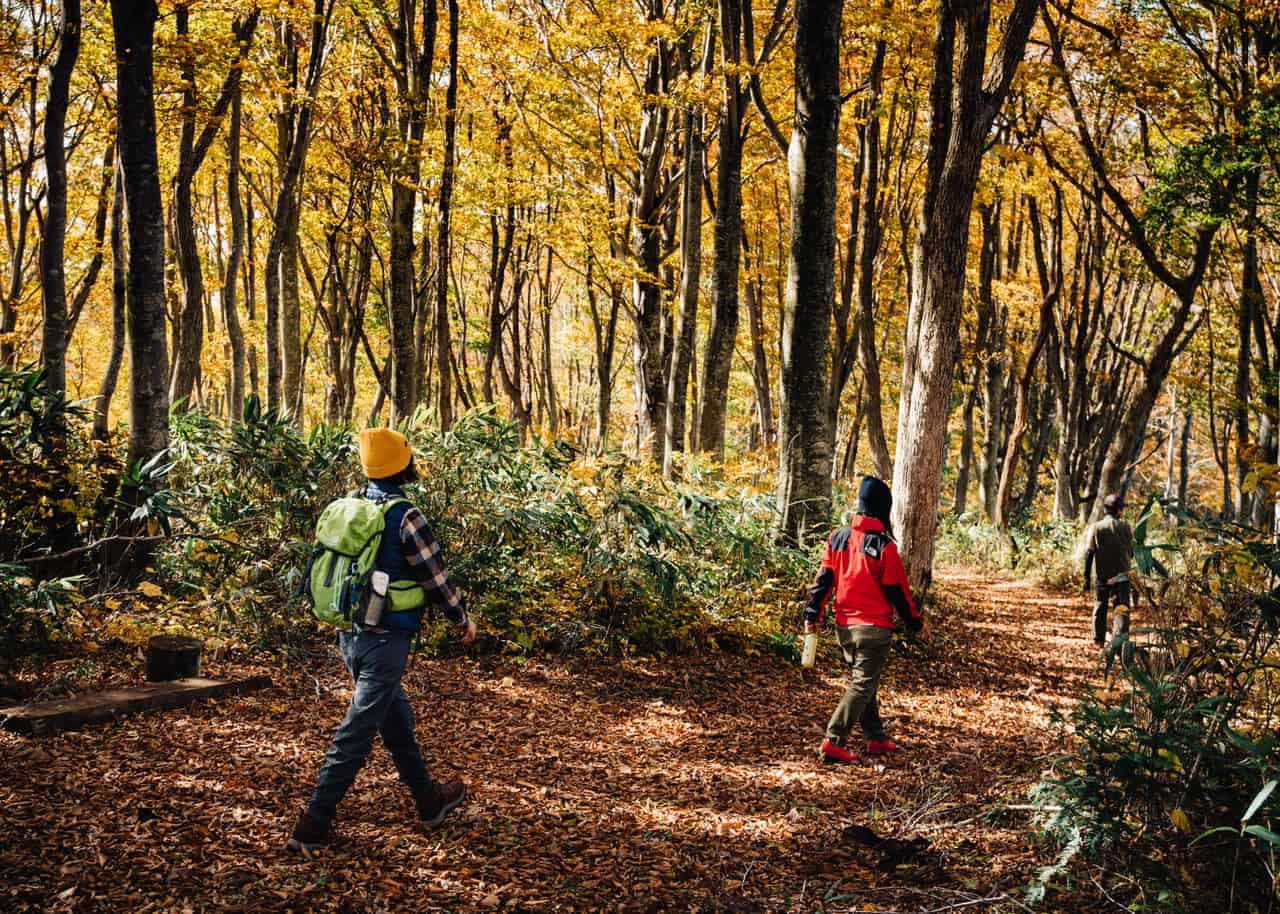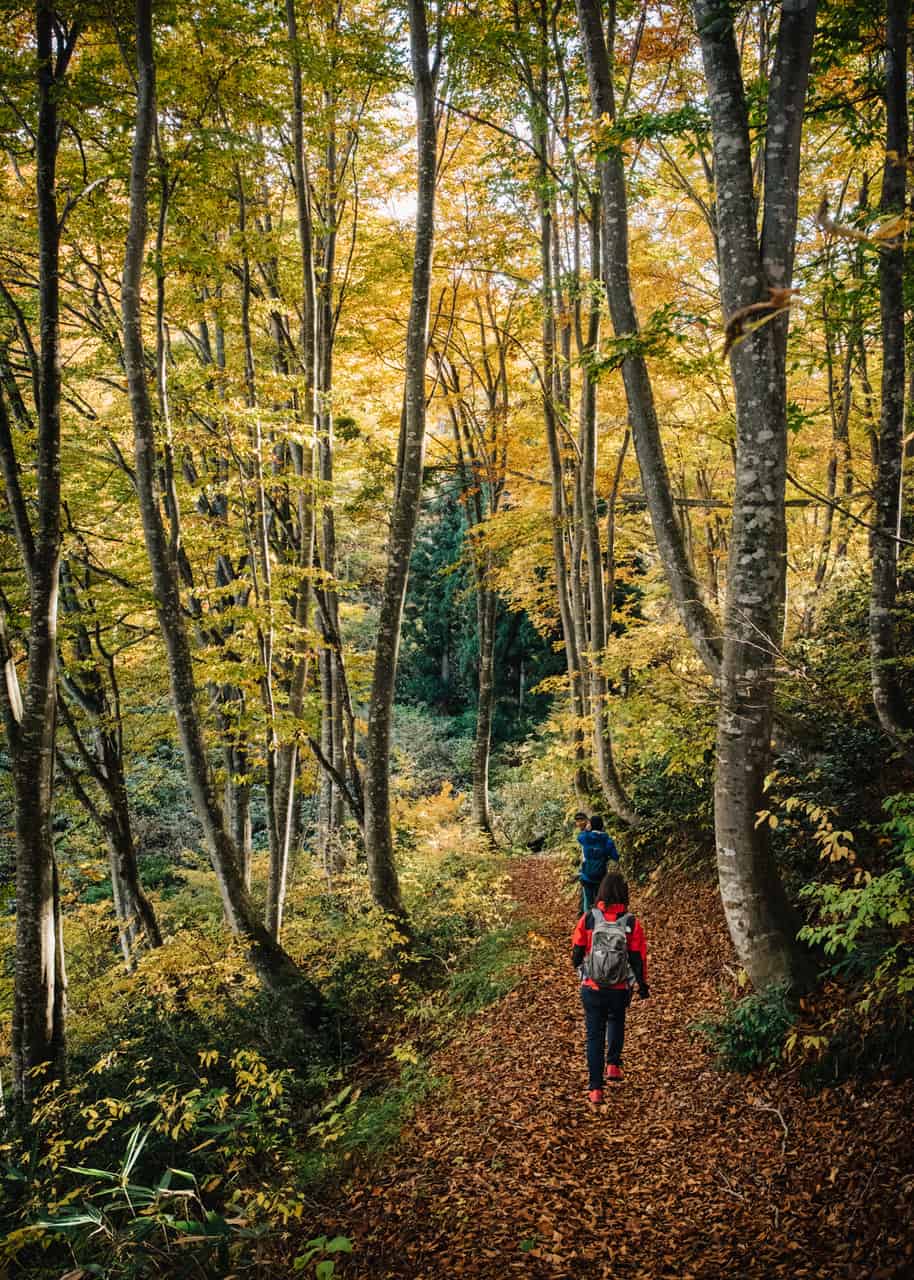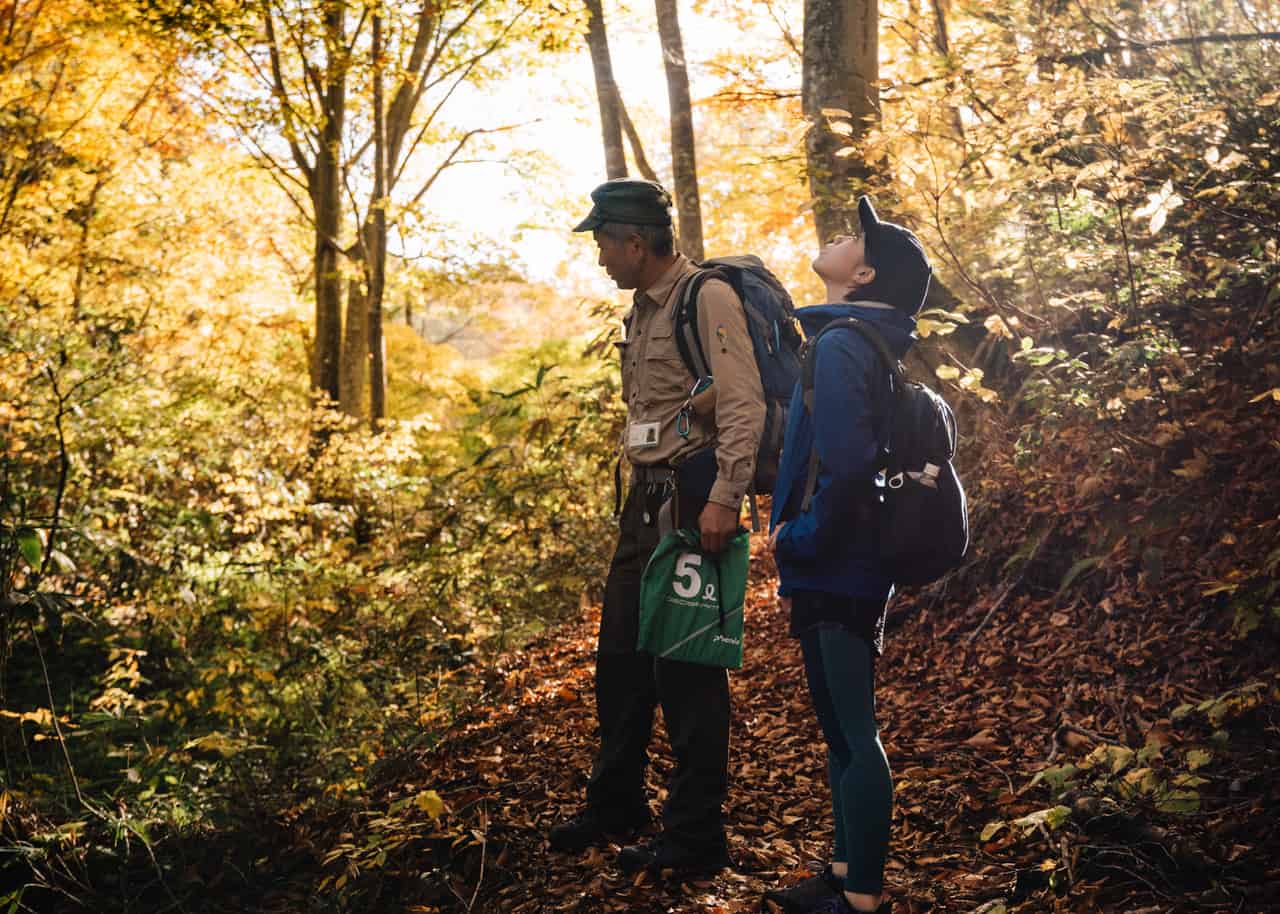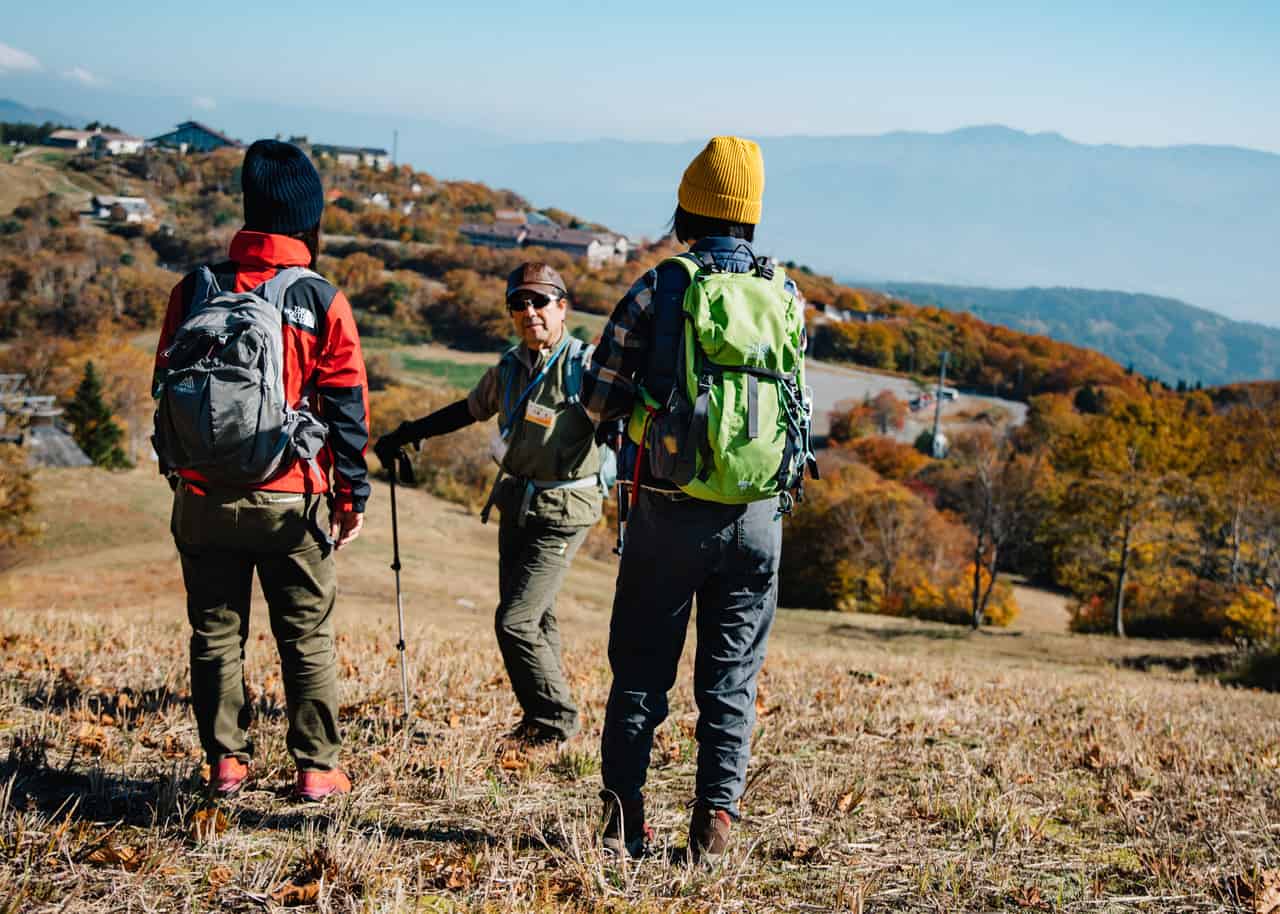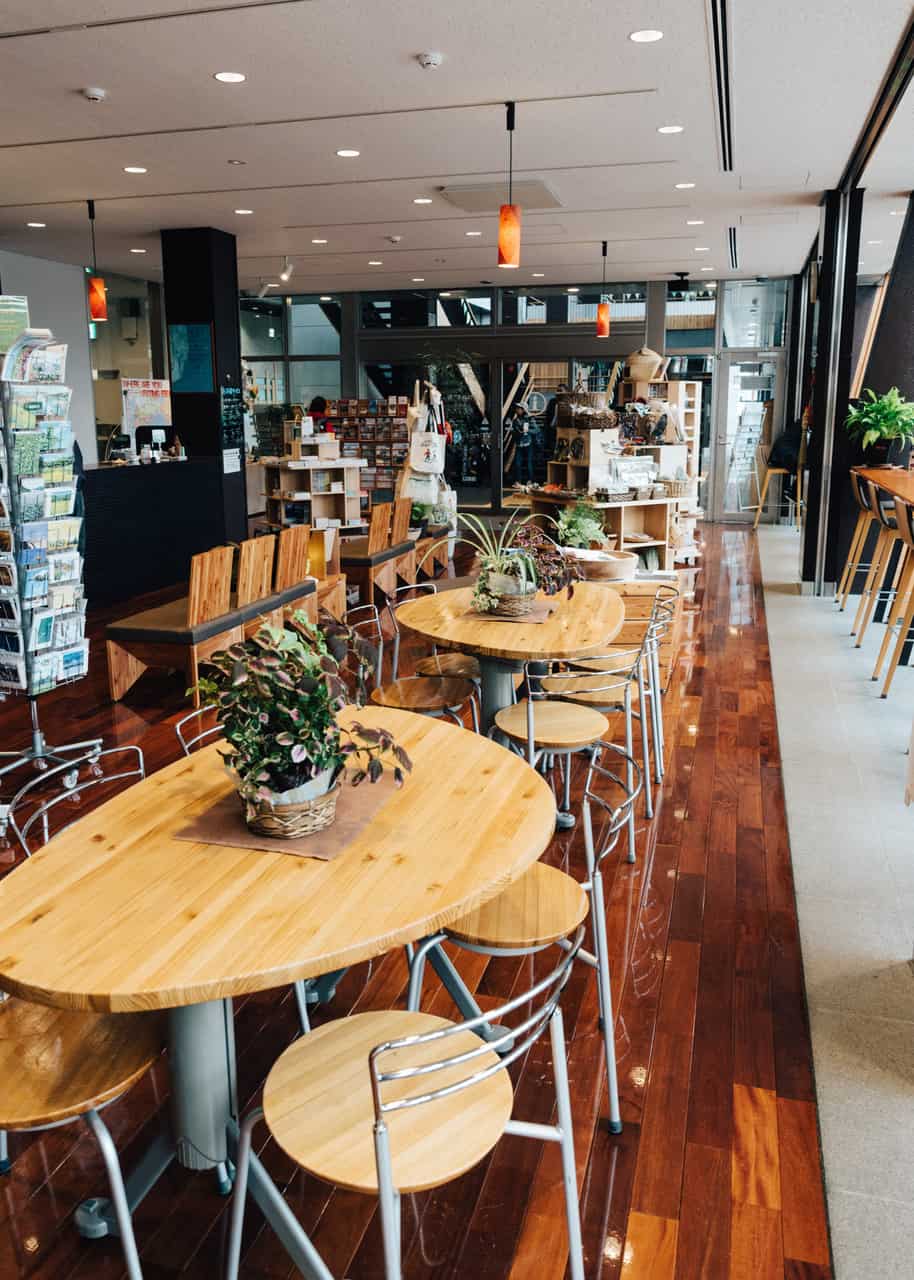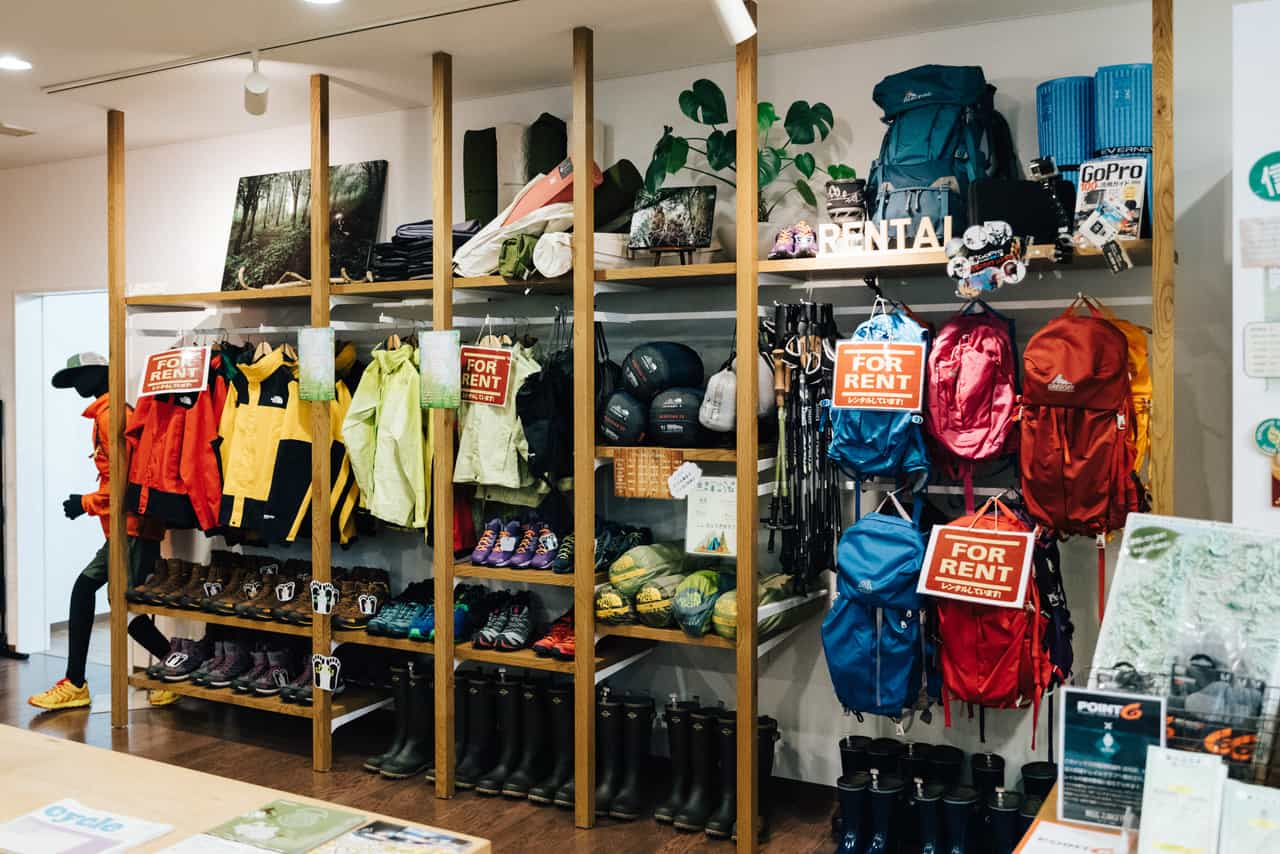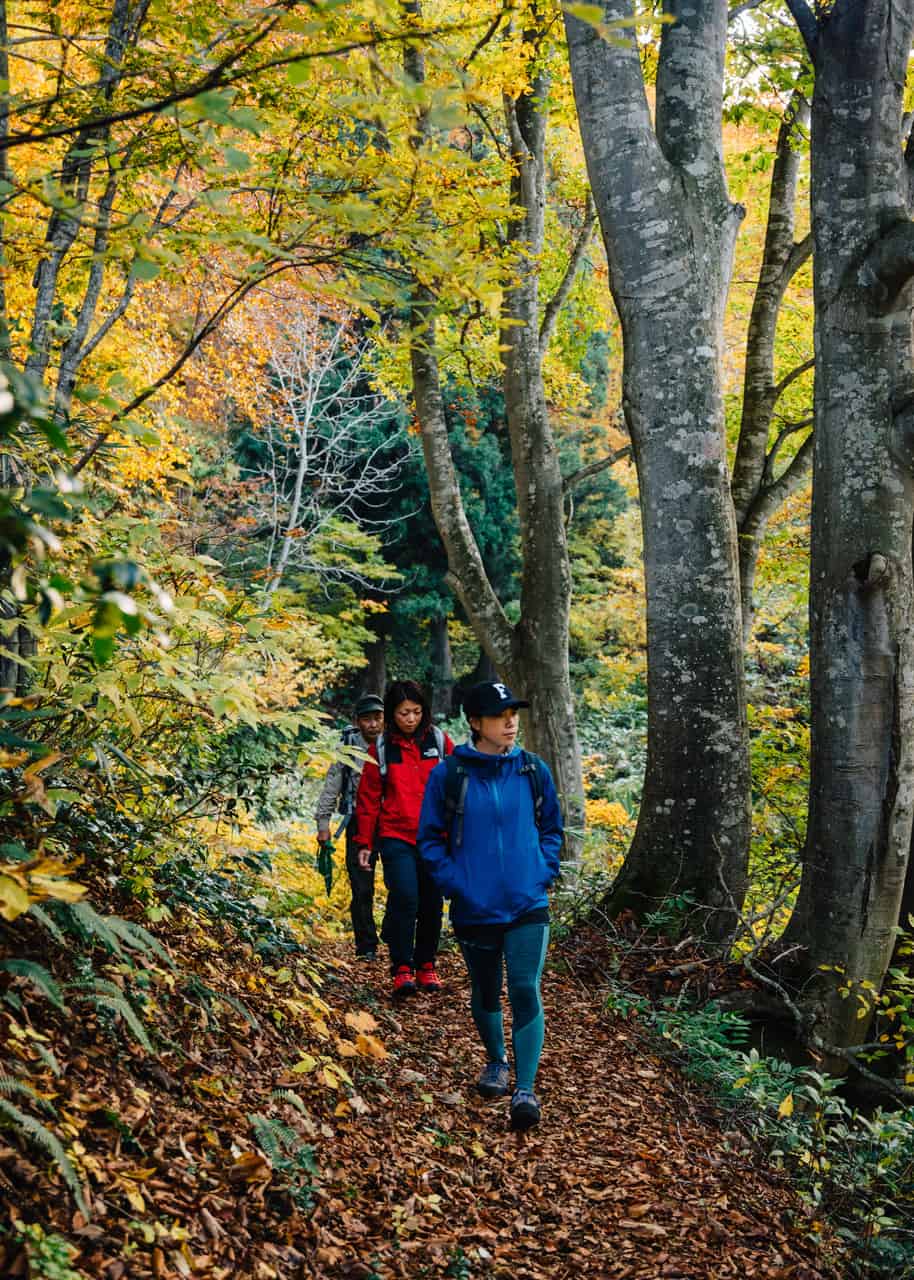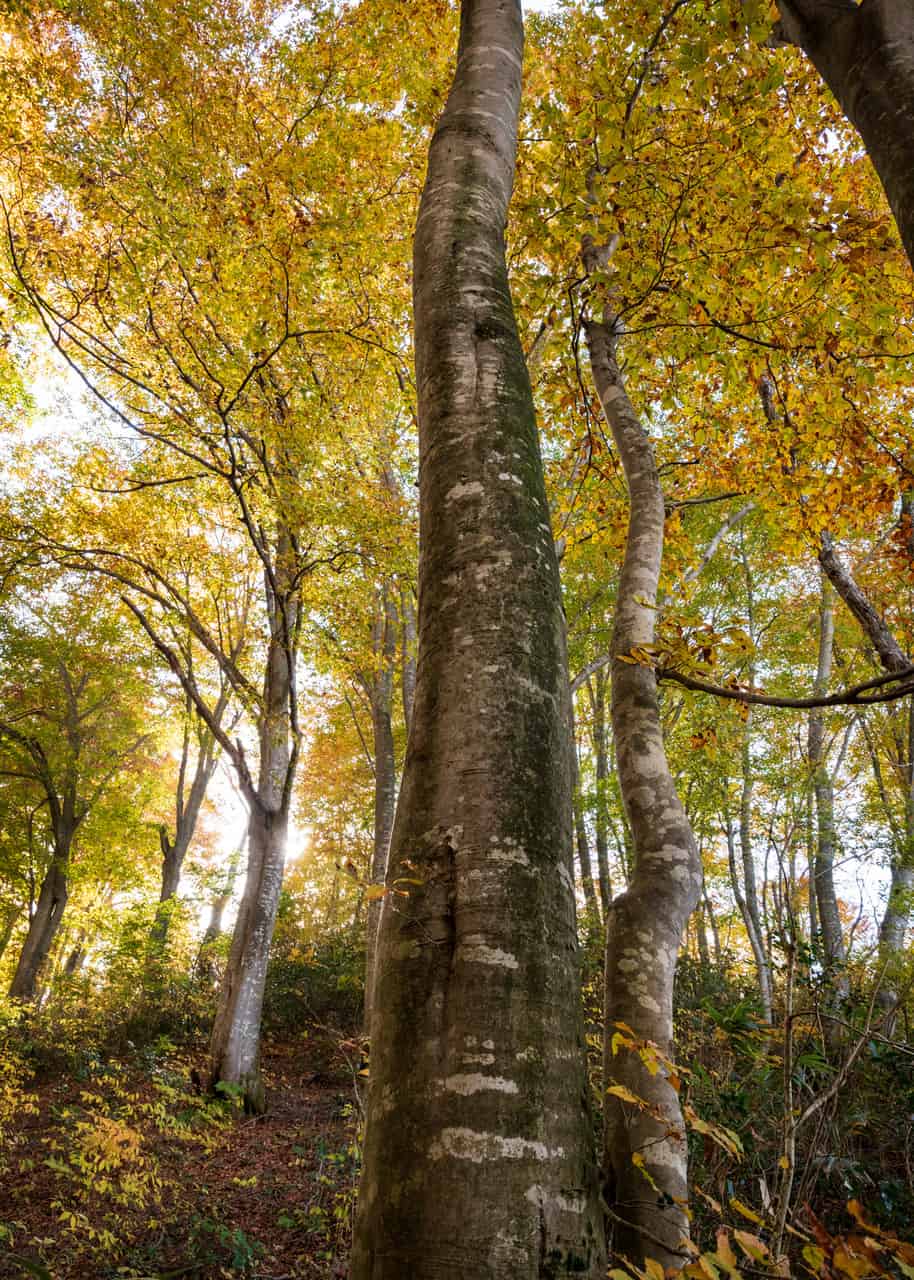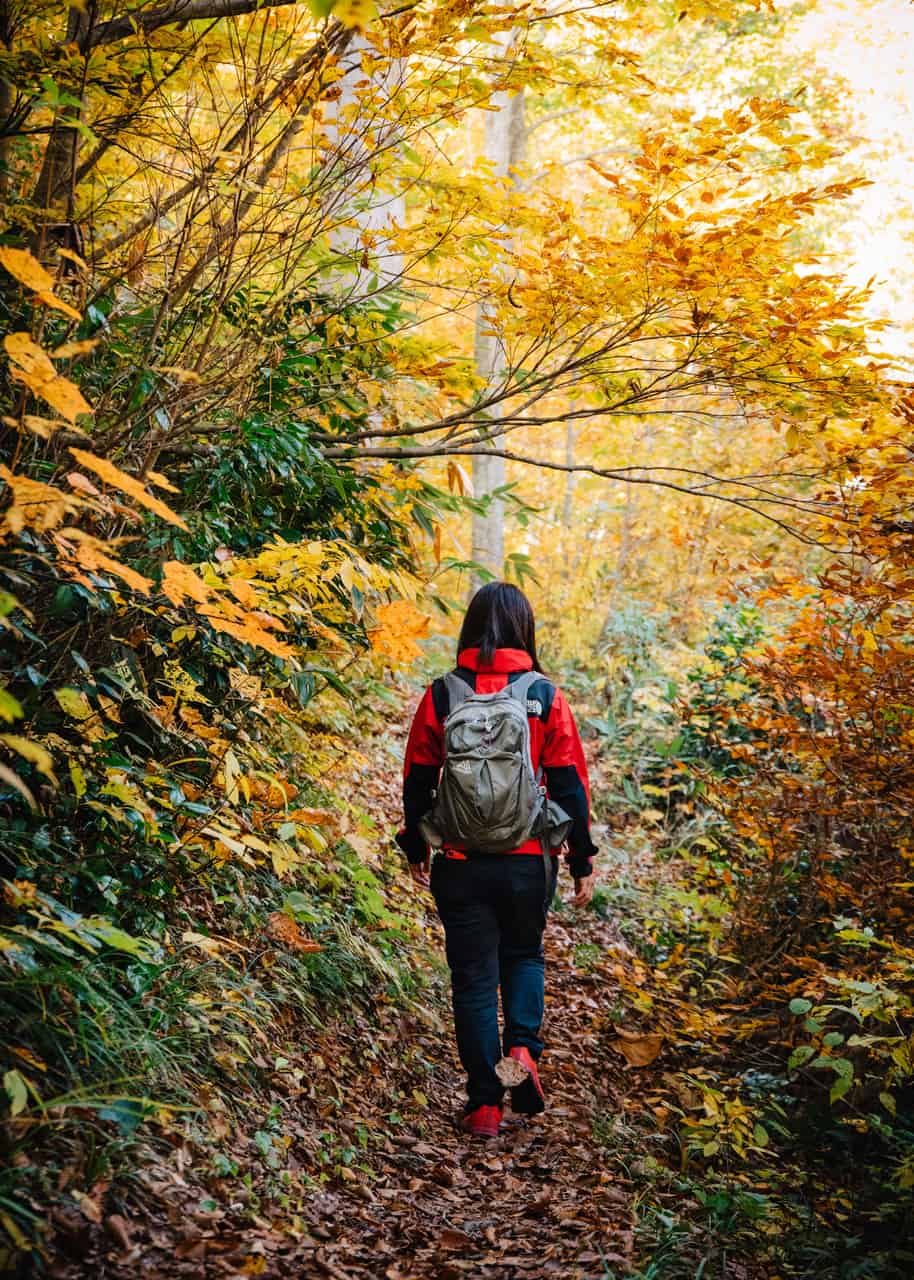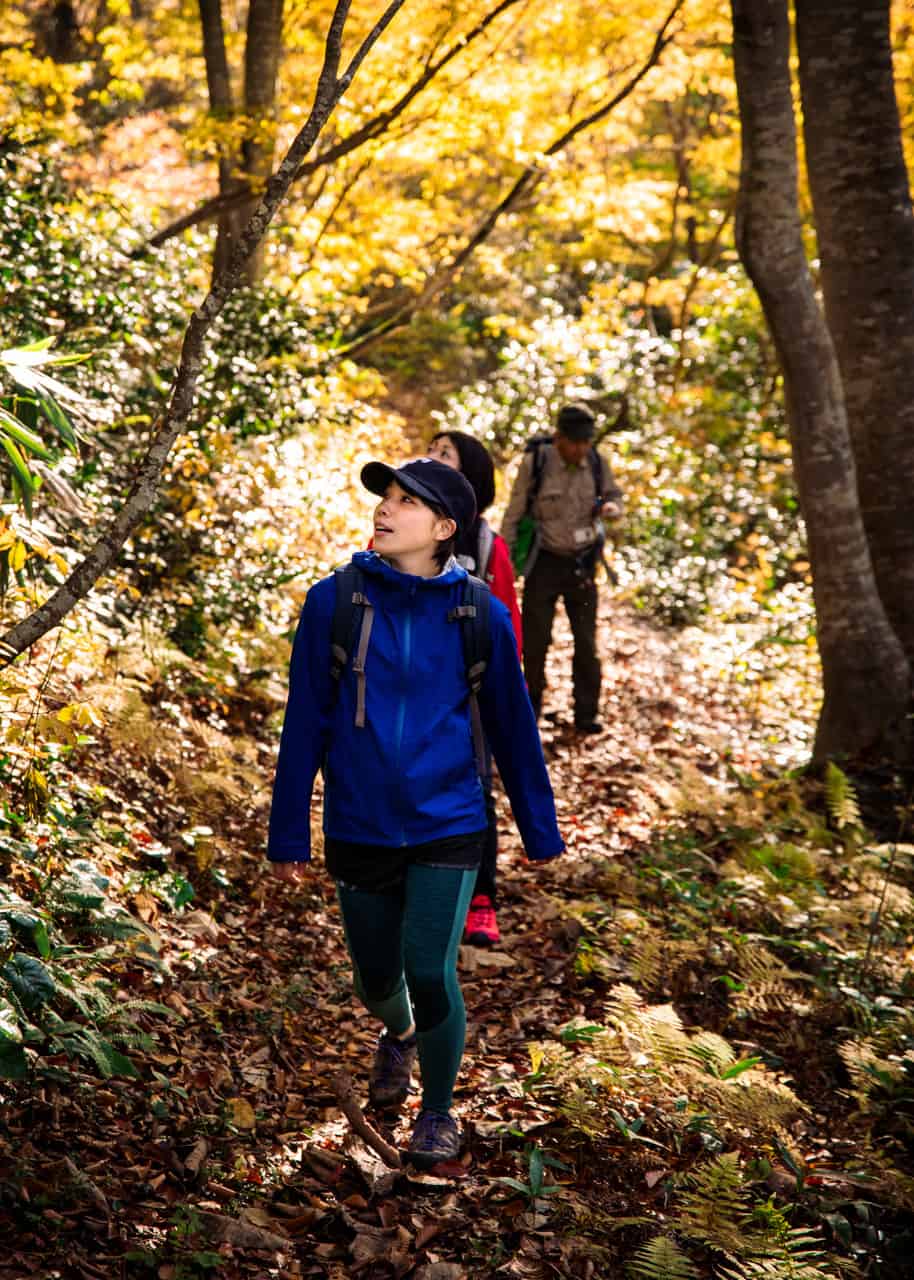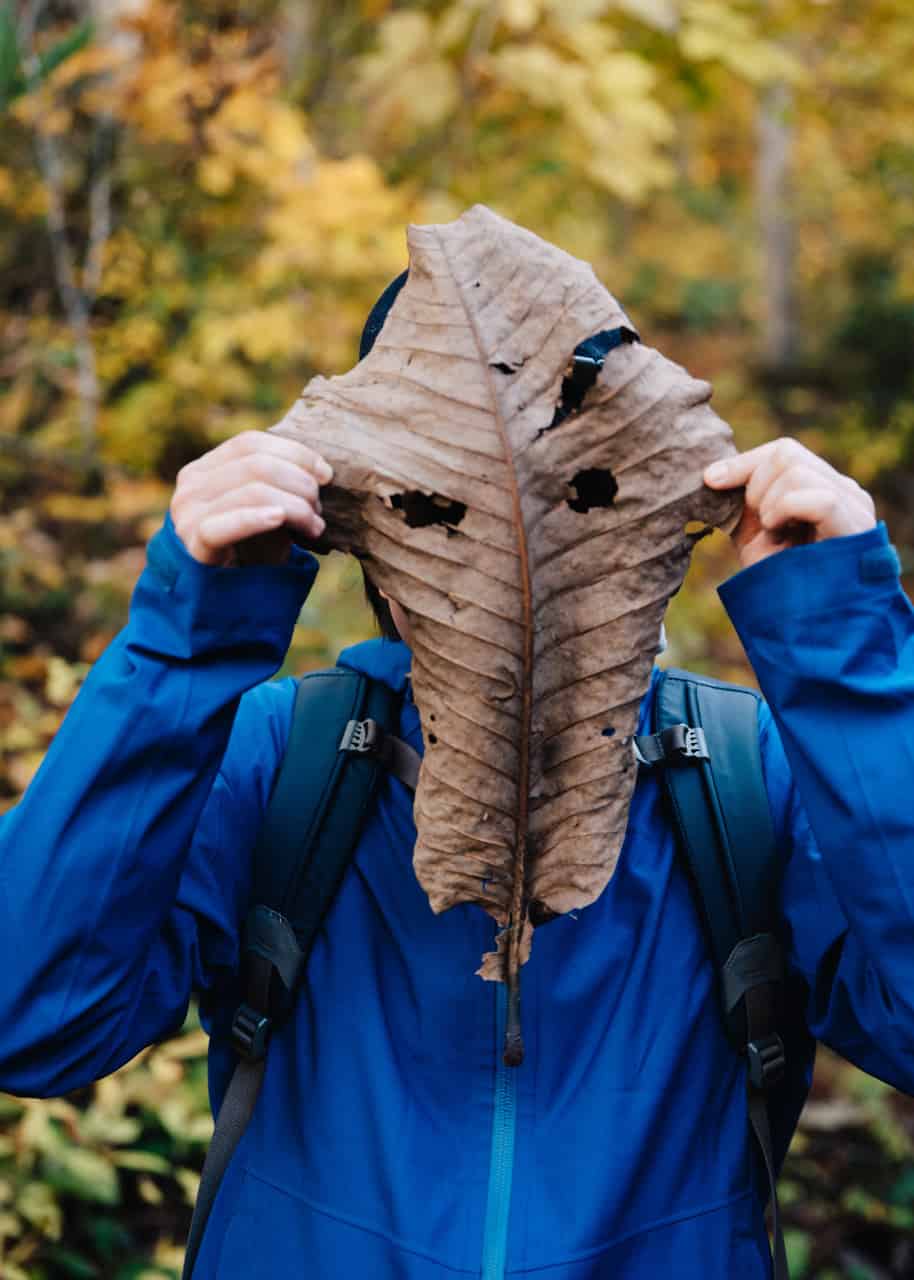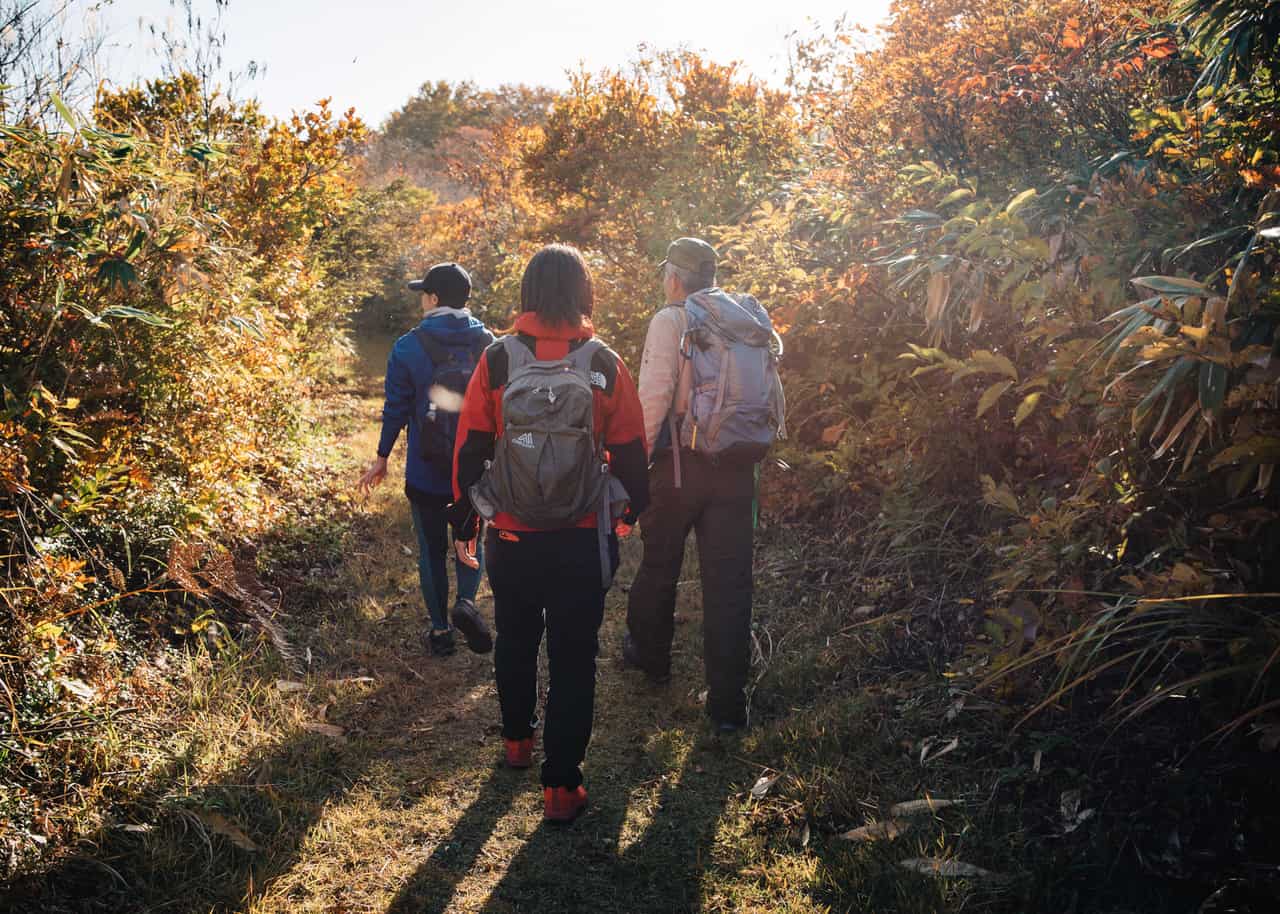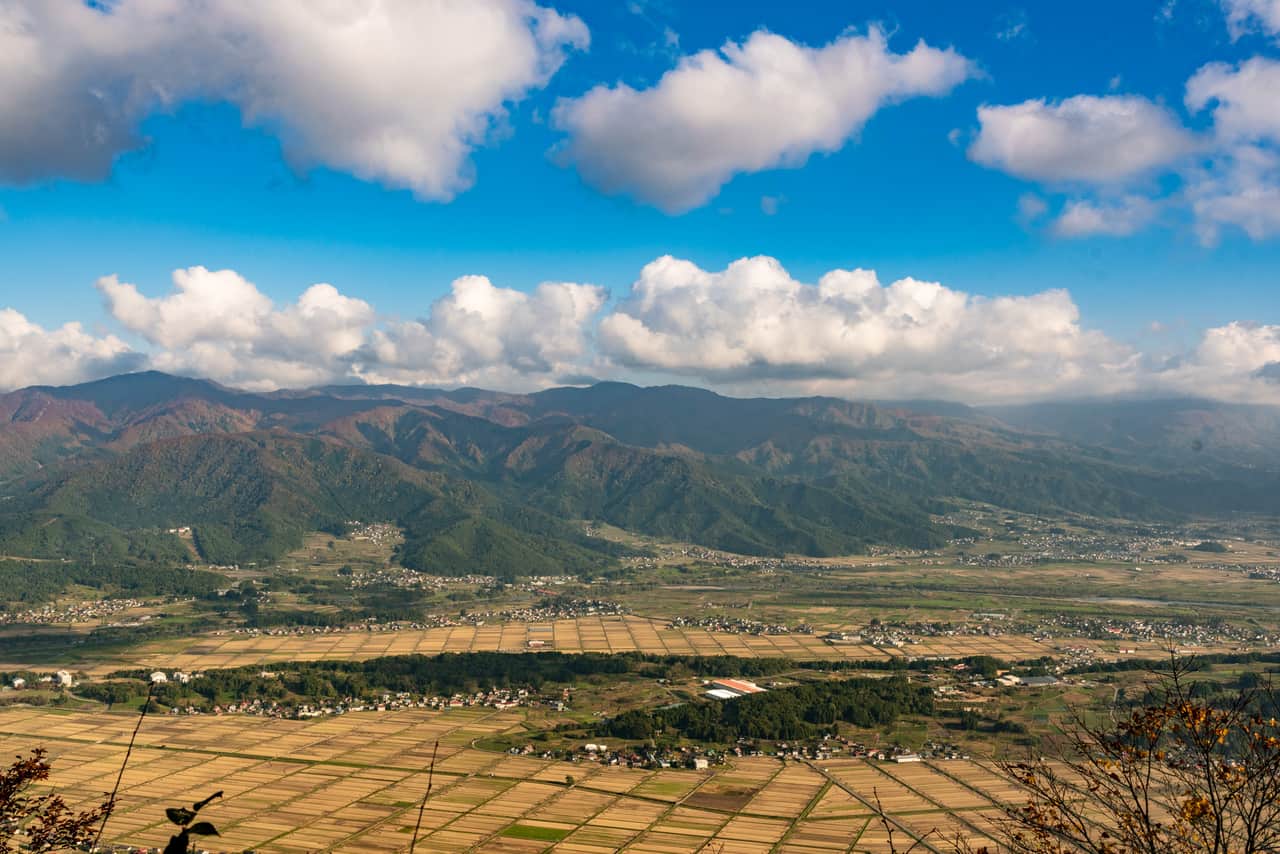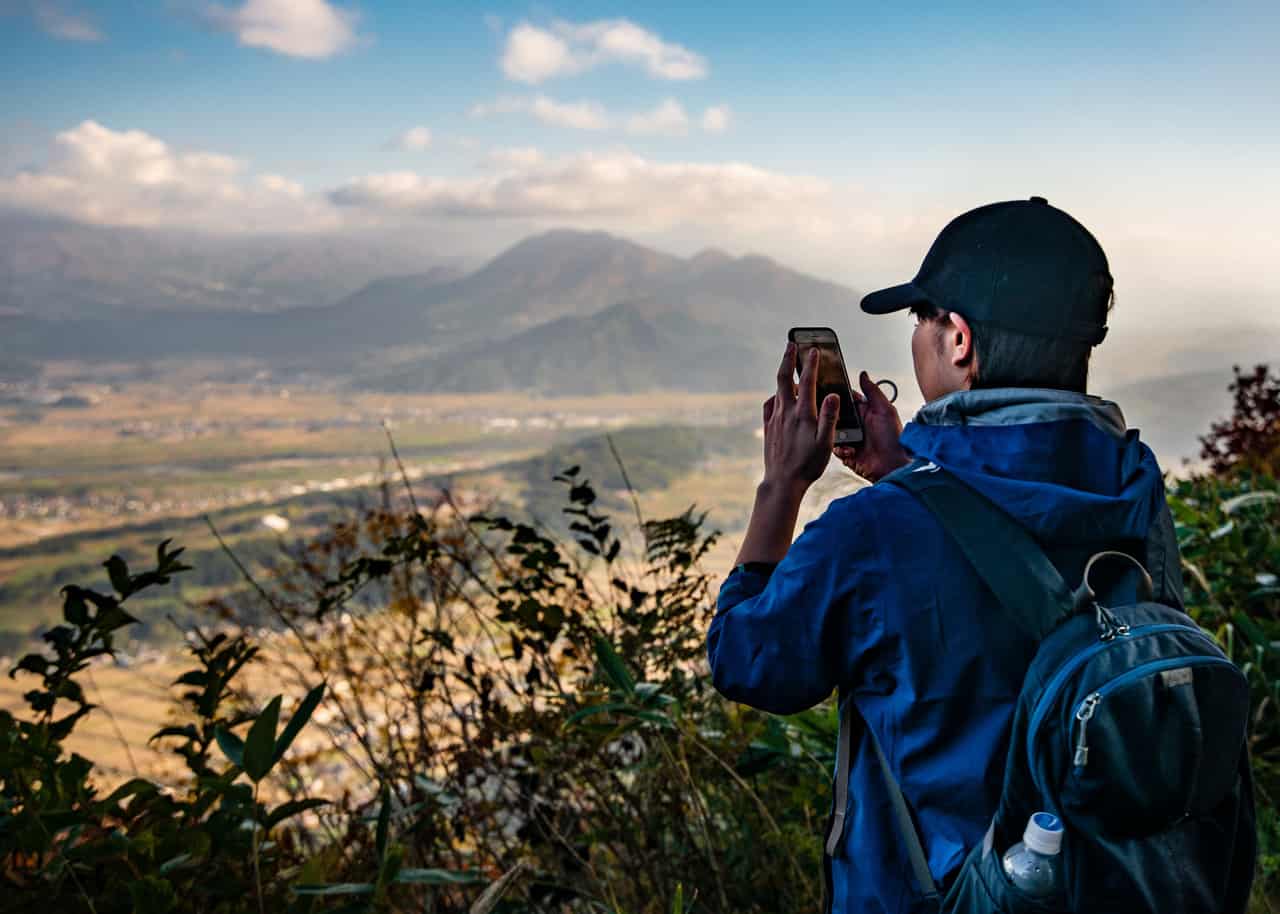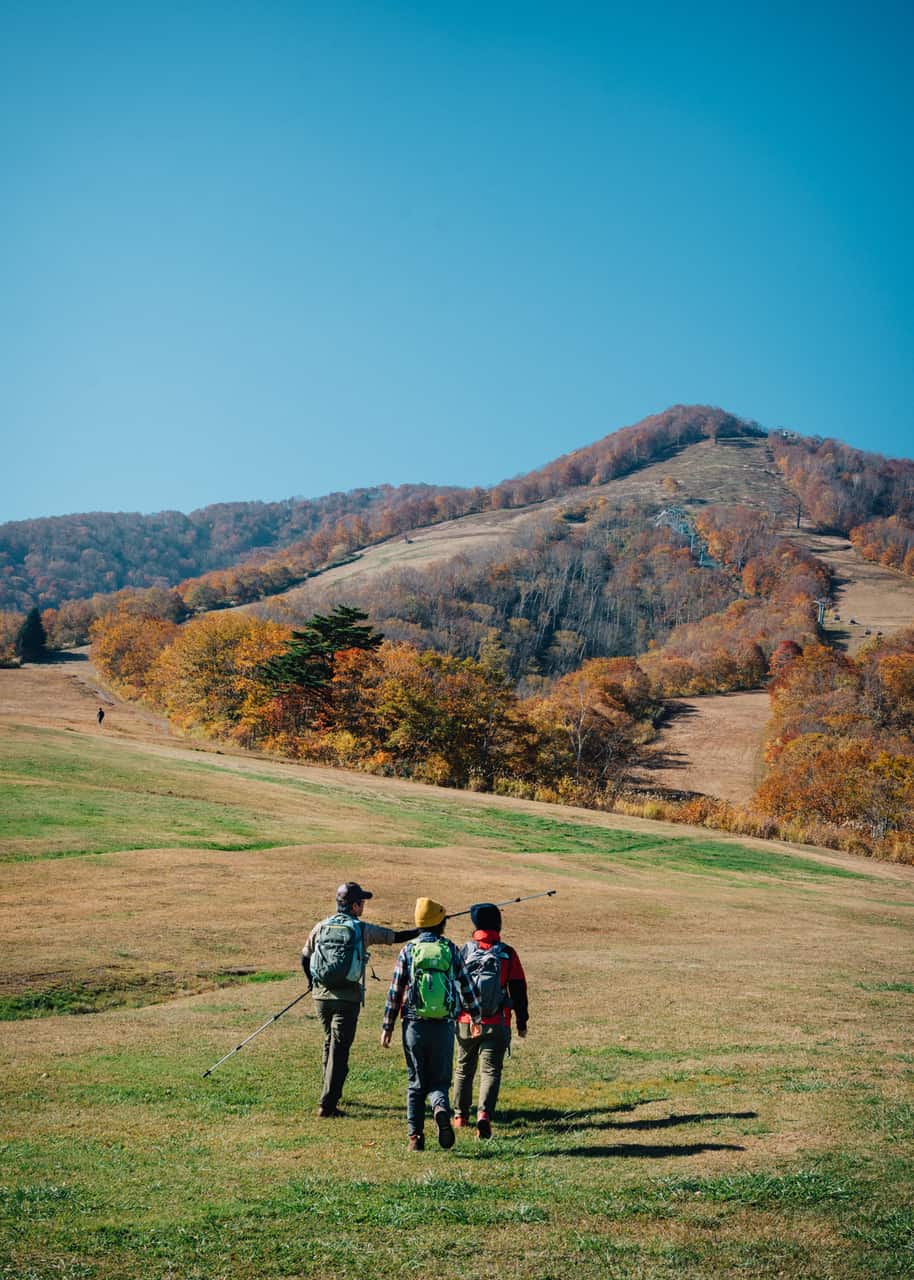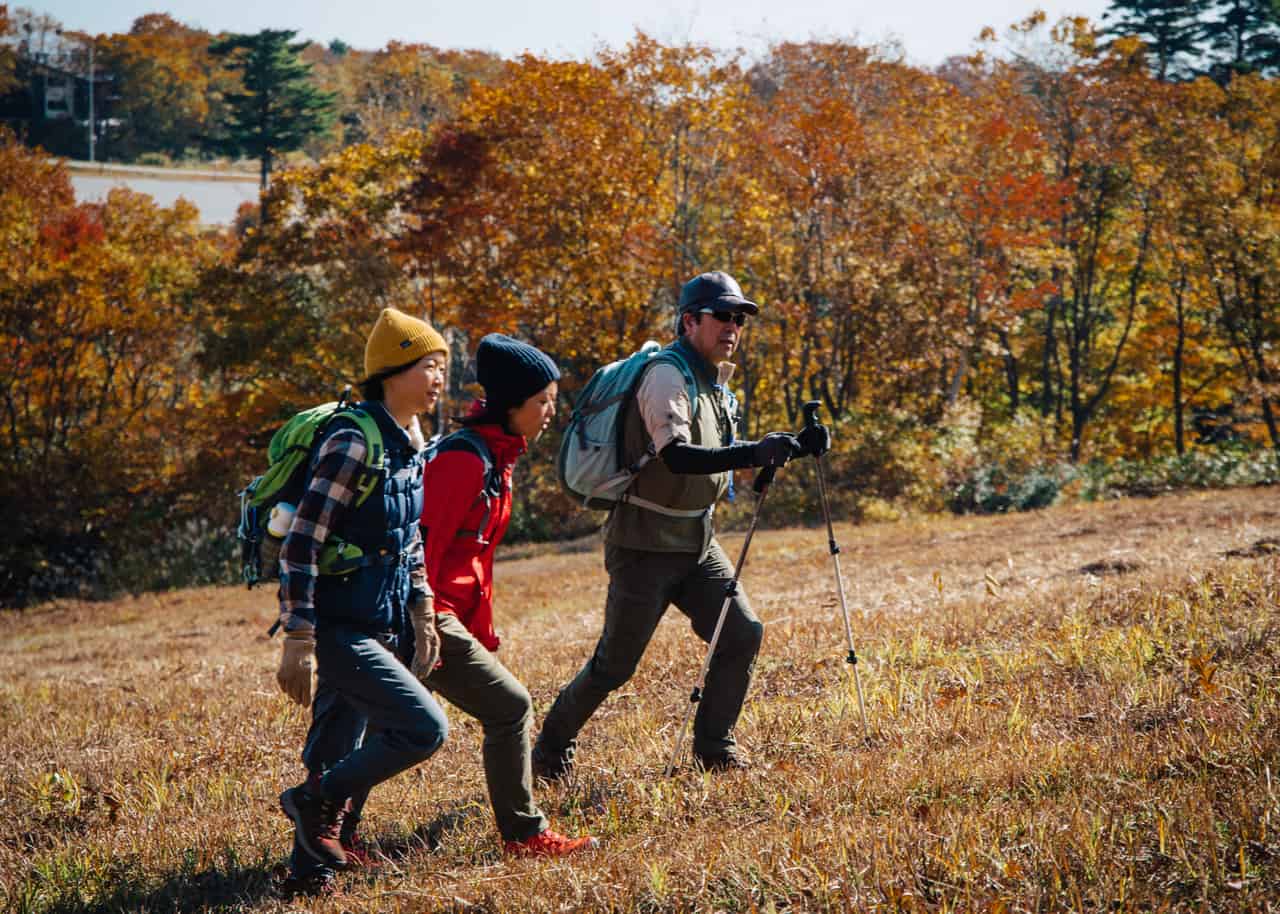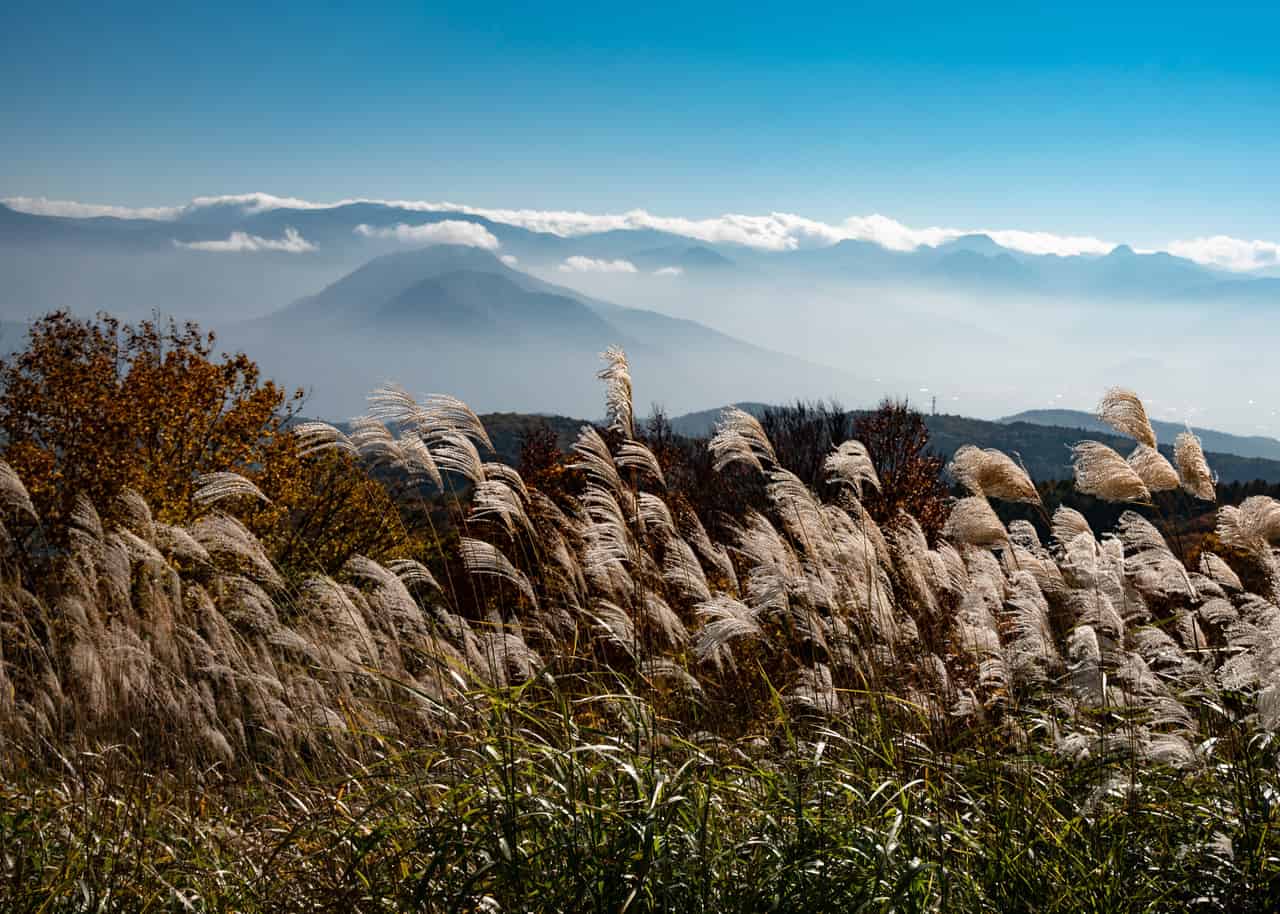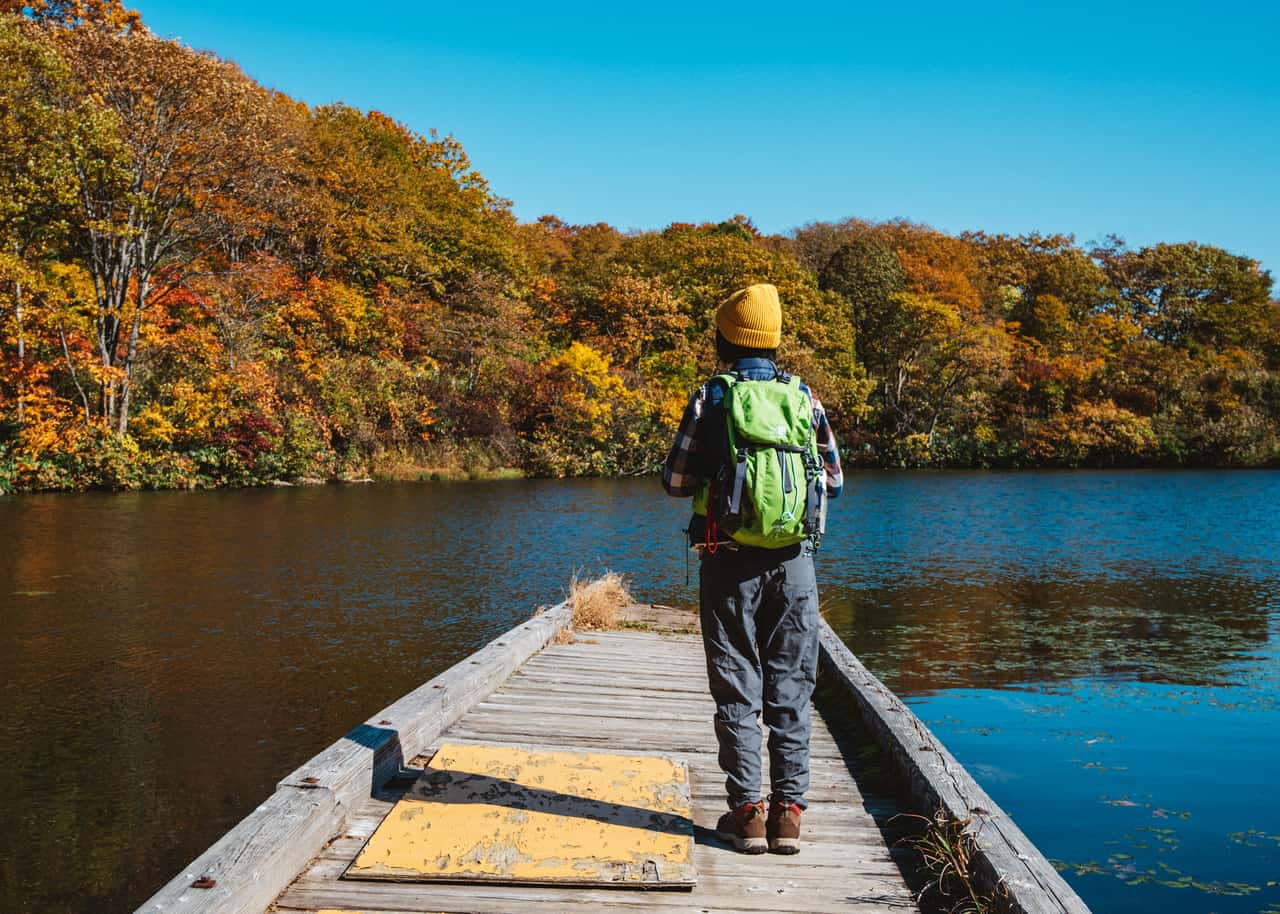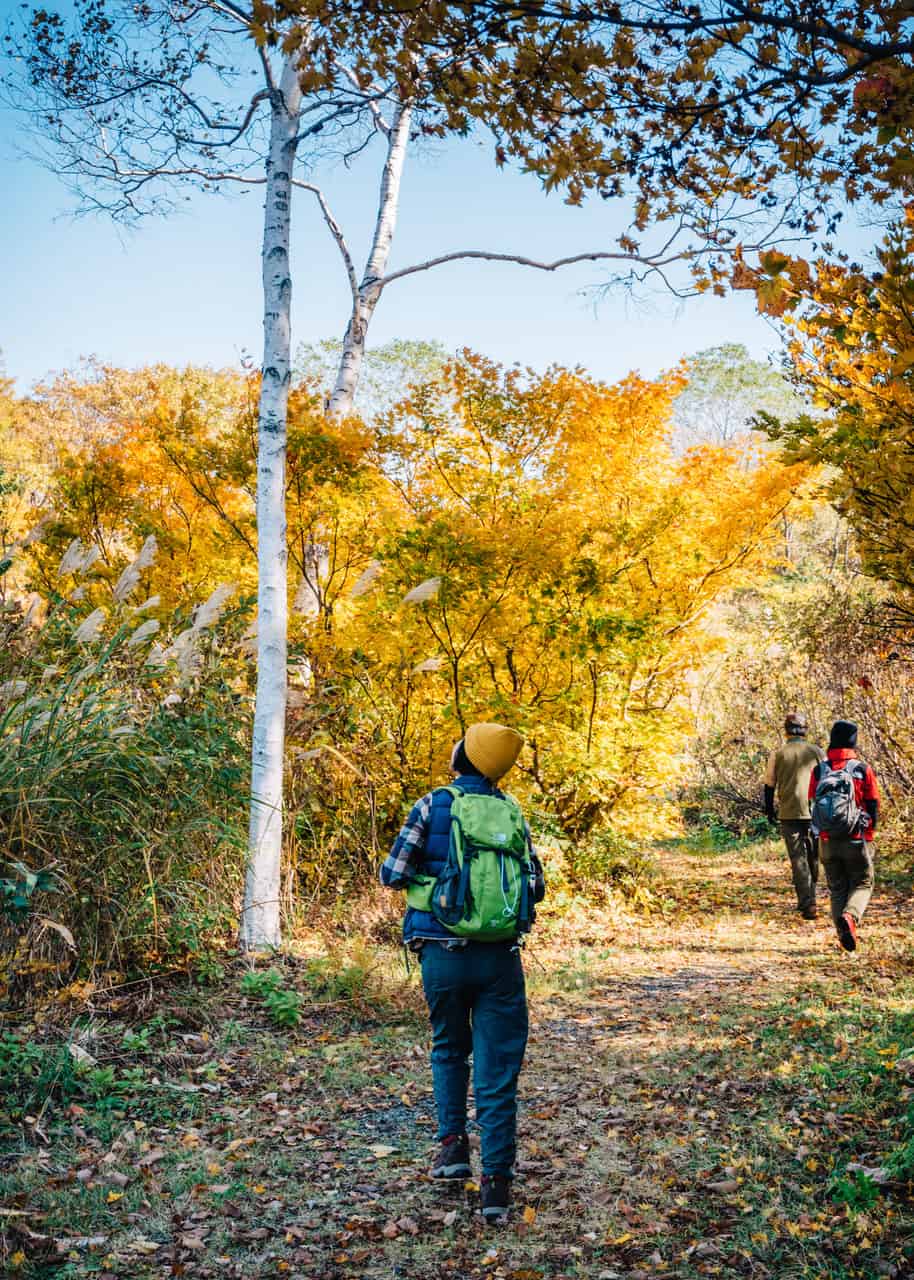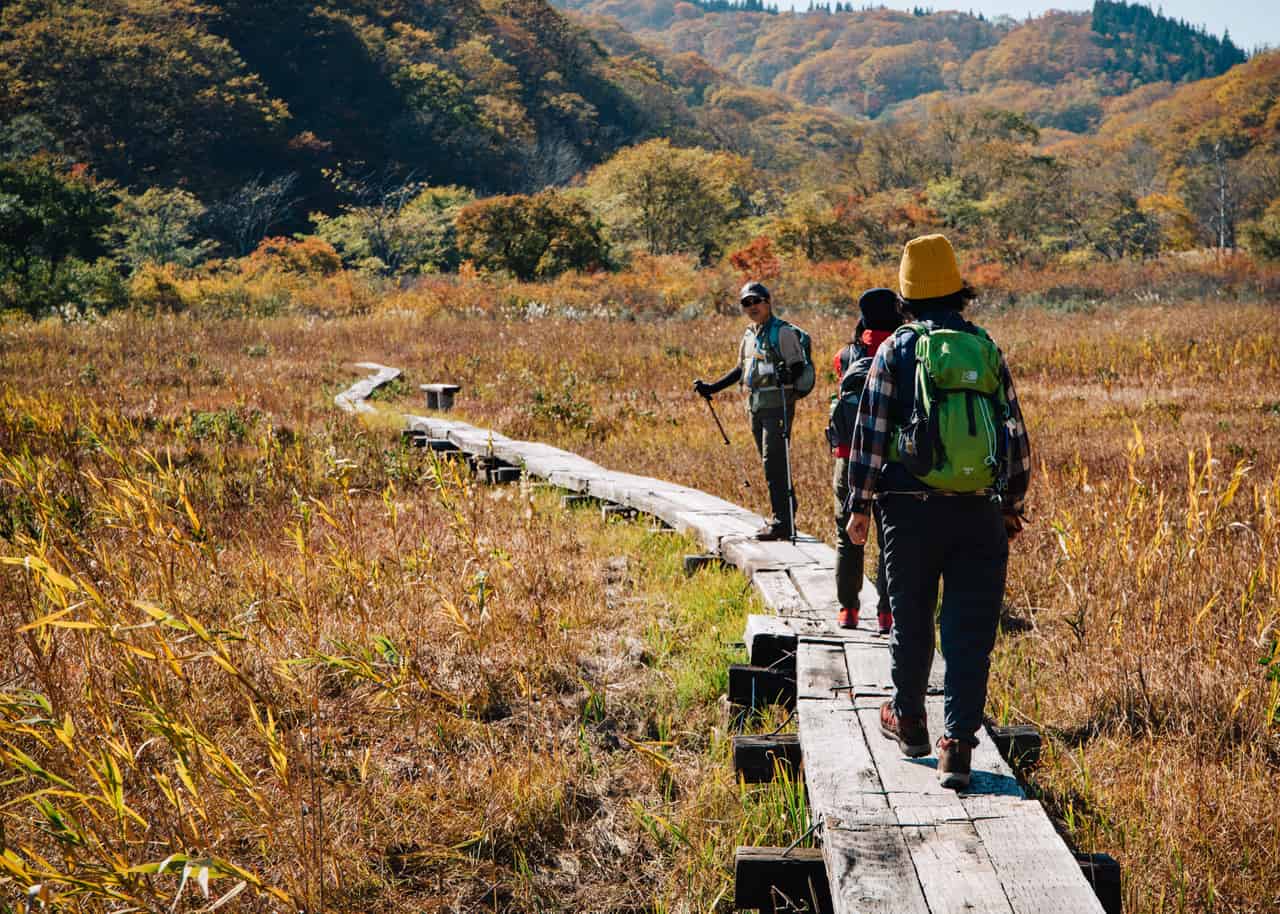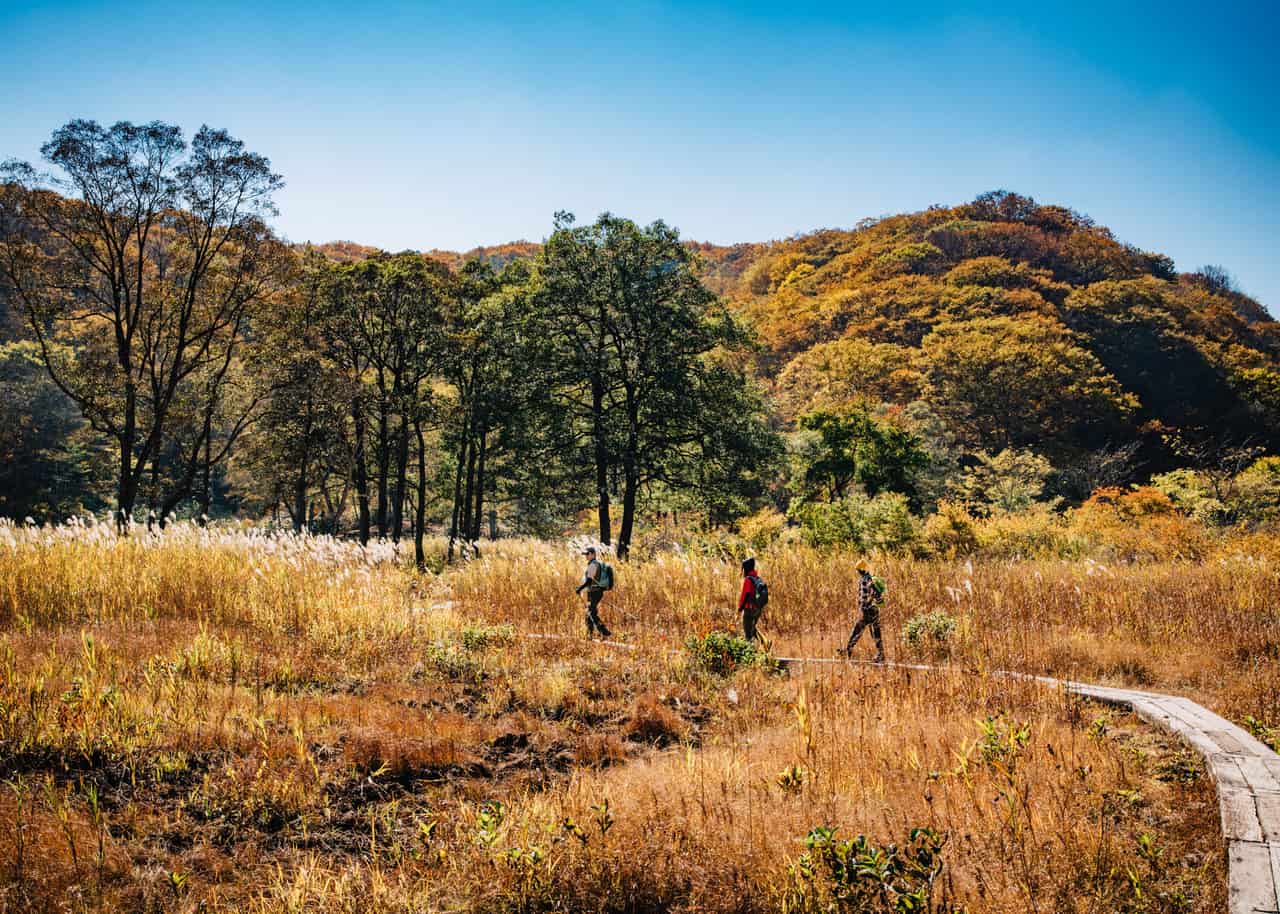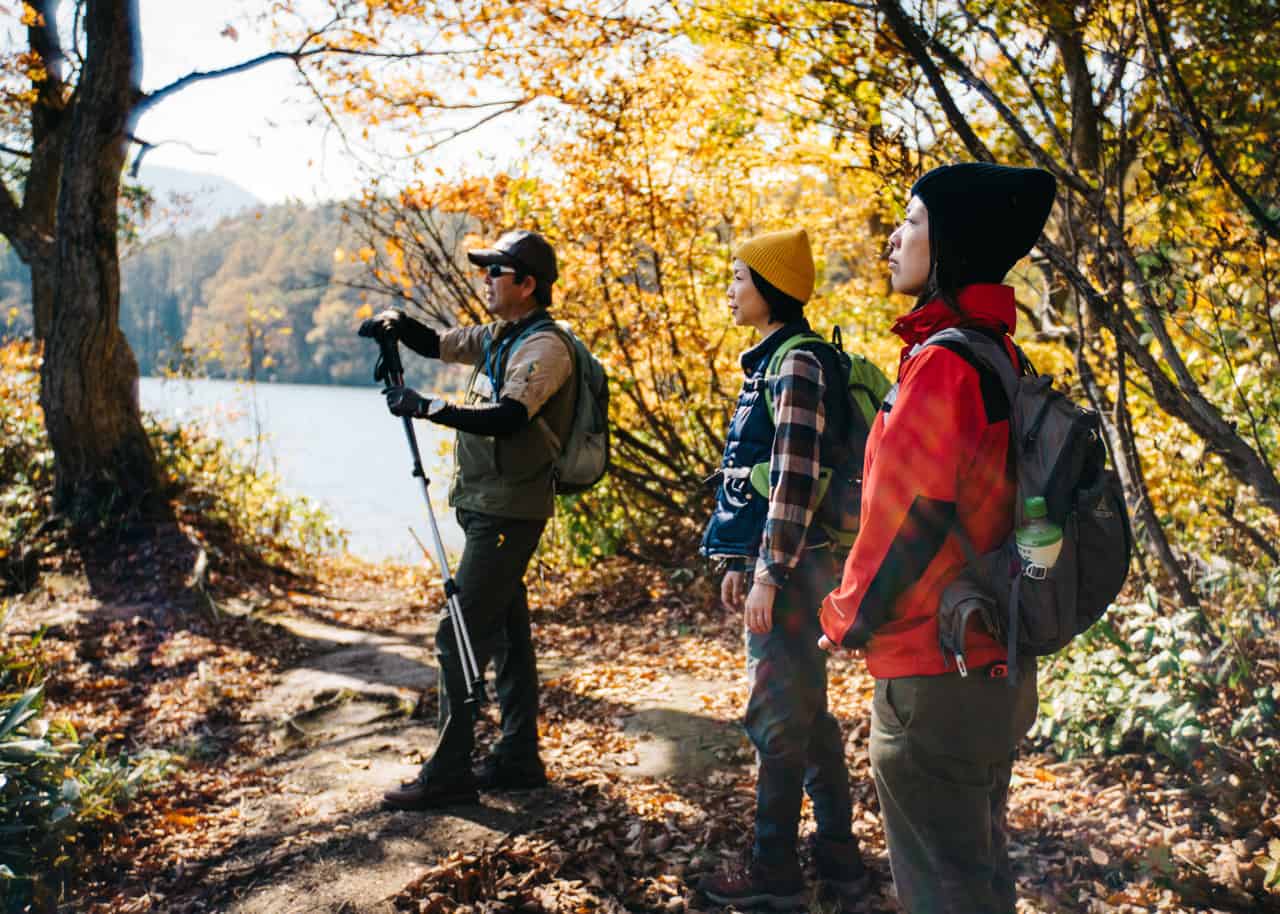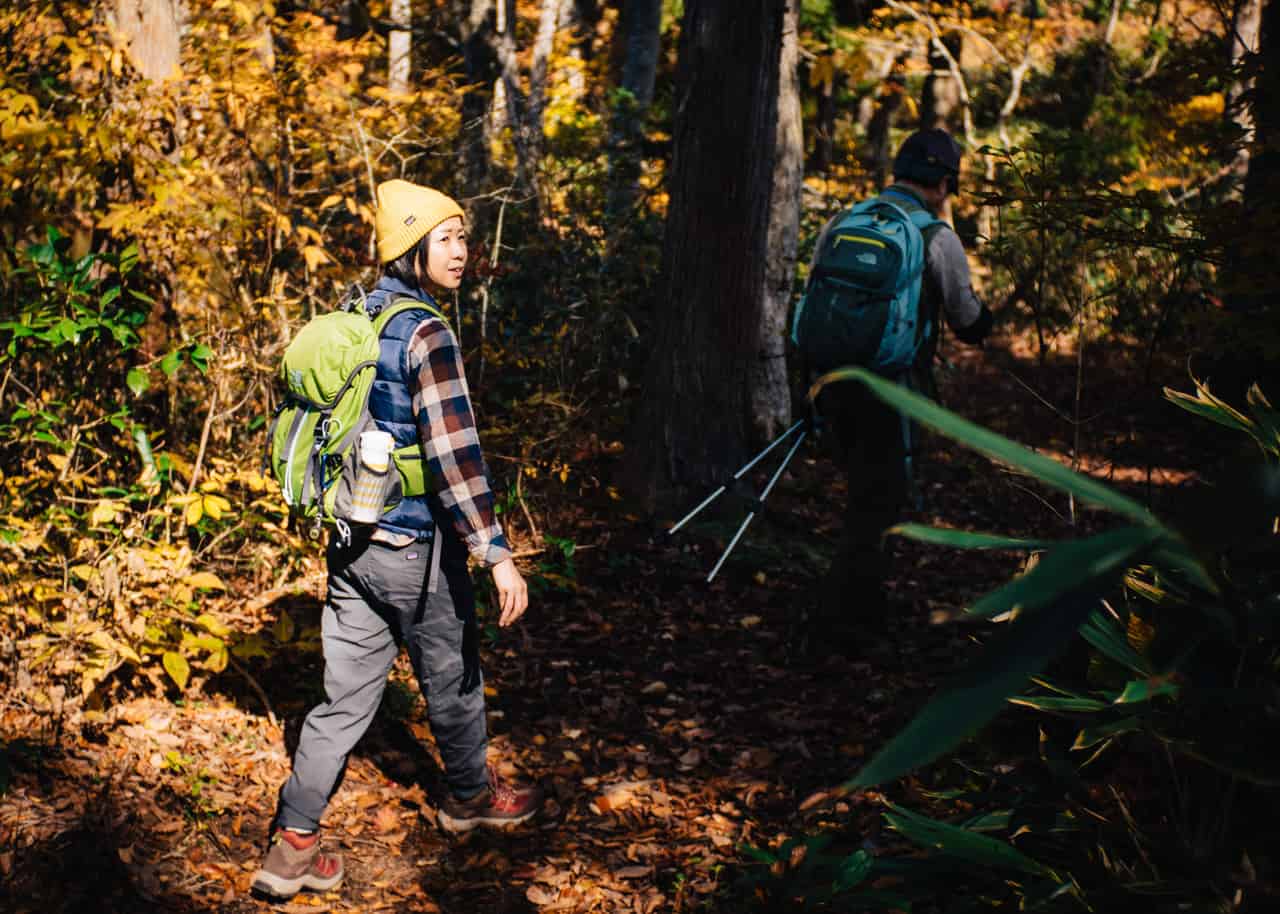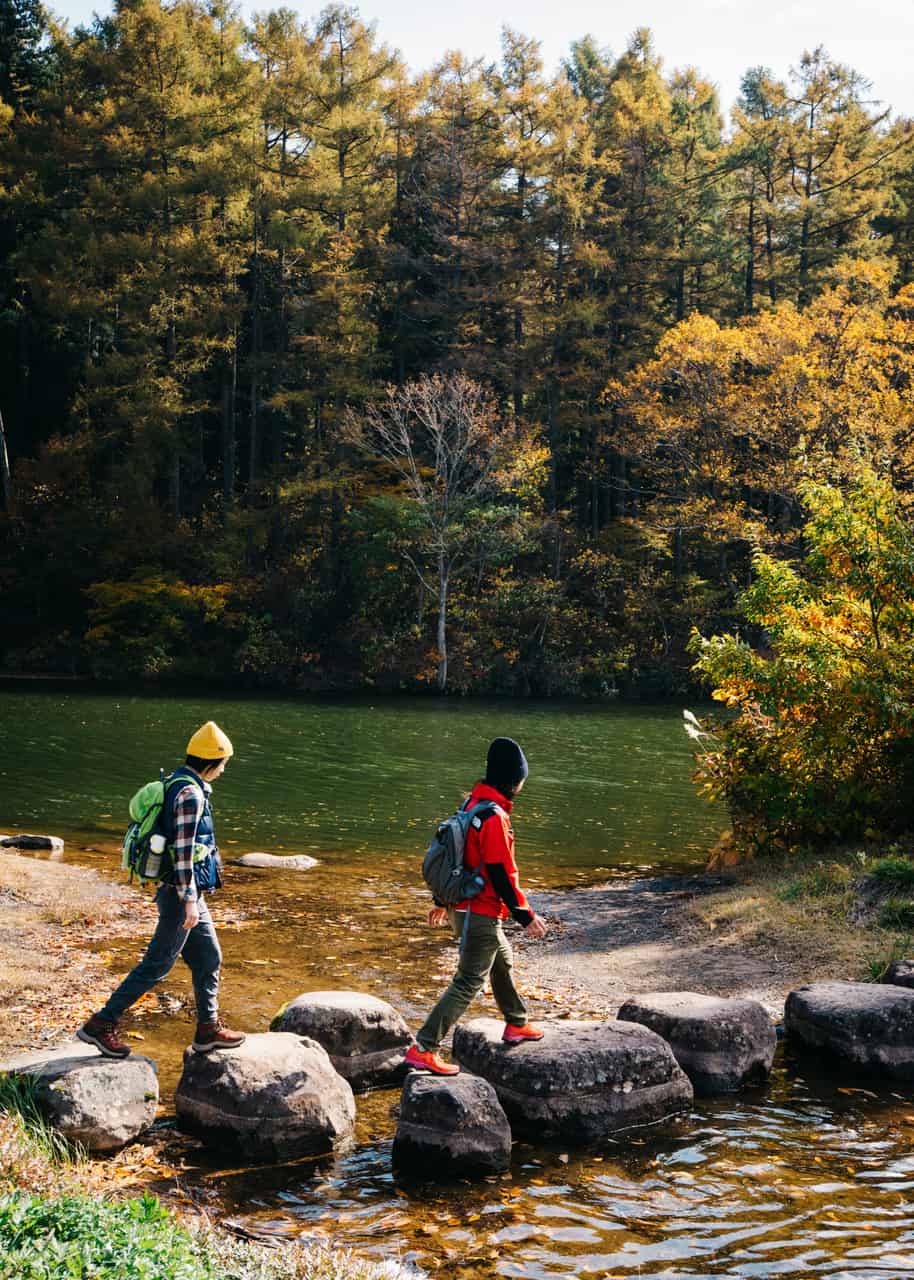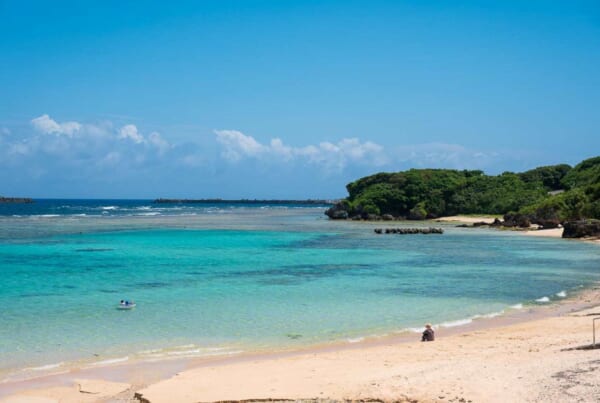Standing under the yellow canopy of beech trees on the Shin-etsu Trail as I lifted my camera to my eye, I laughed out loud for no apparent reason. Perhaps it was a side-effect of shinrin-yoku, the phenomenon of “forest bathing,” that is being recognized recently for its health benefits. Or perhaps it was just being in awe of creation, that anywhere in the world could be so breathtakingly beautiful at any time. But here I was laughing from the joy of just being where I was, perhaps something those who have experienced the Shin-etsu Trail can understand.
The Shin-etsu Trail runs approximately 80 km along the ridge of the mountains between Nagano and Niigata Prefectures. It is based on America’s Appalachian Trail, as the trail was developed by volunteers and is maintained by a non-profit conservancy, The Shinetsu Trail Club. The trail is divided into six sections, each trek-able in a single day, though you could shave a day off by staying in a tent at one of the several tent sites the club maintains. When the snow has sufficiently melted, from mid-May to late June until early November, the trail is open to hikers. If you aren’t comfortable hiking without an experienced guide, the club had many guides who are available to hire for half-day, day, or multi-day treks.
An Easy Trip from Tokyo to Iiyama
I arrived in Iiyama on the relatively new Hokuriku Shinkansen, which connects Tokyo to Kanazawa via Nagano Prefecture. In my imagination, northern Nagano Prefecture was too far from Tokyo for me to visit easily, but in reality, the Shinkansen delivered me in comfort from city to city in just over an hour and a half, slightly longer than it takes me to get to Yokohama on normal trains. My host, Takayanagi-san, met me at the gate and took me downstairs to the Tourist Information Center to brief me on our adventure to come. I should pause to say the Tourist Information Center is a perfect place to relax, either waiting for your train to return home, or in general, to warm up with a cup of tea. There are several tables and seating along the window which are free to use, and you can shop a wonderful array of local Nagano souvenirs for friends and family back home. And of course the friendly staff of the center are on hand to answer any questions you have about activities and sights in the area, as well as helping you book tours and experiences.
Takayanagi-san had already arranged a guided tour of the Shin-etsu Trail on two consecutive days for us. Since our first tour didn’t start for a couple of hours, she showed me around the station’s shops and services available for tourists coming to enjoy Iiyama’s natural beauty. Iiyama’s primary tourist season tends to be winter, when its plentiful snowfall enables visitors to enjoy a large number of winter activities including skiing, snowboarding, or even snow cycling at one of Iiyama’s two ski resorts. But Iiyama has plenty to offer nature-loving visitors in each of the other months of the year, which is why I came in the fall to see the amazing kouyou, the changing of the leaves.
Iiyama Station also contains a shop that rents and sells equipment for all sorts of outdoor activities. A variety of bicycles, from speedy road bikes to fat-tire off roaders are available to rent, and they also offer tours. Even if you have children who can’t ride, you can rent a bike trailer and pull them along in comfort. If you didn’t bring the right gear for hiking, almost everything you would possibly need can be rented or purchased as well.
Meeting Our Trail Guide
We met our guide, Biyajima-san, on the roadside below the entry point to where we would begin our hike. Biyajima-san is a member of the Shinetsu Trail Club and an experienced trekker, kayaker, snowboarder, and artist, among his many talents. His experience made me feel better when I heard our destination for the day was Kumanosuike, “Bear’s den pond.” Sure enough, Biyajima-san pointed out several indications of bears in the area including fresh bear dung; however, the abundance of bear food in the area make encounters between bear and man a rarity for casual visitors who use common sense. Bears generally want even less to do with humans than we want to do with them.
Biyajima-san lead us along a section of the Shin-etsu Trail famous for an abundance of beech trees, regal trees with white bark and leaves that turn a golden yellow before they are shed for the winter. Indeed, the golden color was so abundant in this stretch of the trail that I forgot I was walking in complete shade as it felt I was being bathed in golden sunlight.
Like most of the Shin-etsu Trail guides, Biyajima-san had a depth and breadth of knowledge about the trail, especially as a naturalist. He pointed out various plants and insects along the trail and taught us how to identify them. For example, he showed us which tree has the biggest leaves of any plant in Japan!
Due to our late start, we only had a few hours to trek with Biyajima-san, but he led us to a magnificent spot overlooking Iiyama City in the valley below. The recently harvested rice paddies created a patchwork of gold across the plain and the Chikuma River, the longest in Japan, fed the greenery growing on its banks.
Ascending the Shin-etsu Trail from Madarao Ski Resort
The next day we would get an earlier start with Sato-san, our second Shin-etsu Trail guide, as we explored parts of Sections 1 and 2. In addition to being a capable trail guide, Sato-san runs one of the lodges hikers use as accommodations. We met at Madarao Visitor Center and drove up to the foot of the Madarao ski resort slopes. This is the official start of the Shin-etsu Trail and since the lifts aren’t running in the off-season, trekkers would begin by making the very steep 2.2km ascent to the peak of Mt. Madarao. We climbed only about a third of the way up so Sato-san could point out the ridge line stretching away into the distance that the Shin-etsu Trail follows into Niigata Prefecture.
From there, Sato-san drove us to Akaike, the Red Pond, which was completely enveloped by fall foliage. Akaike is the goal for Section 1 / starting point of Section 2 and there are tent sites available to rent for those who want to get an early start on Section 2 after a good night’s sleep. The other option is to arrange a pickup to take you to one of the many accommodations available just a few minutes down the mountain by car. (I stayed at a lovely ryokan run by the Kanoe family because, well, I’m just not into tents.)
Next, Sato-san guided us through the Numanohara Wetlands, a marsh area that has an amazing bloom of white and yellow flowers in the Spring. We followed a narrow elevated wooden path above wetlands and along a small stream. During the Autumn season, the flowers and the green grass turn to gold, matching the leaves on the nearby hills.
We ended our sampling of Section 2 at Lake Nozomiko, which Sato-san said freezes over so solidly in the Winter that you can walk across it. The day we were there, we walked through the beech forests along its shoreline and took in the view of Mt. Madarao in the distance.
Though we only trekked a few trails from two of the sections of the Shin-etsu Trail, I was amazed by the diversity of the natural landscapes we encountered. Ponds and streams, beech forests and evergreens, sweeping views of Nagano and deep valleys, yet I had barely scratched the surface of the beauty the trail has to offer. Still more incredible, the landscape changes continuously from mid-spring flower blooms to the brilliant greens from the summer rain to the golden shades of fall. One could hike the trail several times in different seasons and enjoy it in a completely different way.
Granted, I’m not much of a hiker and I was glad to get my boots off in the evening and soak away my exhaustion in one of the local onsen. As a city dweller, I have become numb to being surrounded constantly by asphalt and concrete, so just those few hours in nature were so refreshing to my soul. A few weeks later and the vivid hues of Nagano’s fall foliage are still fresh in my mind, calling to me in my dreams.
Getting to the Shin-etsu Trail
For starters, you should visit the Shin-etsu Trail Club website which has important information about the trail, guides and services in English. Access to the trails by taxi or bus can most easily be done from Iiyama Station. Though the trail is absolutely free and you can simply bring your own gear, find a trail head and begin trekking, it is wise to check in at one of the five official Visitor Information Centers (details on website) to find up-to-date information on trail and weather conditions and pick up a map. The Activity Center at Iiyama Station also has information and maps as well as rental equipment for anything you forgot to bring. If you’d like to hire a guide, contact the Shin-etsu Trail Club via email prior to your trip and they will make the arrangements for you. There are a number of member lodges you can also reserve in advance that provide comfortable accommodations and delicious meals, and part of their service is pick-up and drop off at the various trailheads along the route.
Sponsored by Shinshu-Iiyama Tourism Bureau


